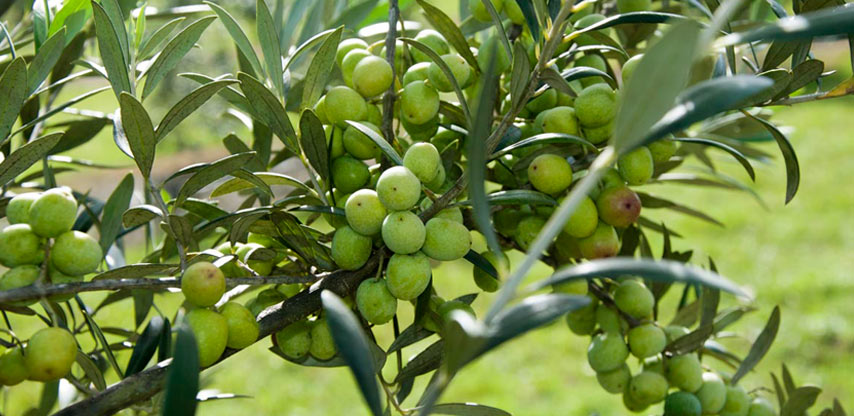Arbequina
An olive tree species native to Palestine introduced by Duke of Medinaceli in the sixteenth century. The duke lived in the Arbeca castle, hence the name given to this species. It is very resistant to frost, with reduced vigor and well adapted to calcareous soils. Fruits are small, between one and two grams. It is the bases for intensive modern plantations as its scarce vigor allows high planting density. Its fruit is used to produce high quality olive oil, somewhat buttery and with a slightly spicey hot after taste.
Frantoio
Native to Italy. In Tuscany, together with the Leccino variety, it makes up to 80% of all the olive groves. Its size is fairly large, with an open crown and branches that tend to a slightly inclined, of horizontal growth. Fruits are small to medium size, oval in shape. When mature, the fruit turns to a characteristic purple color, with noticeable spots. Large, oval seed, slightly curved, with well-marked grooves on the base, which become more superficial and branched out at the apex.
Leccino
Originating from Italy. Together with Frantoio, these are the most popular varieties in Tuscany and the main raw material for its famous olive oils. It is a vigorous plant, with high resistance to low temperatures. It flowers in late spring and has a good and steady production. Early ripening, medium sized, oval, asymmetric olives, rounded at the apex. Their characteristic taste is soft and sweet, the oil is greenish.
Coralina
The plant has a medium vigor with an early production start. Its fruits, sensitive to the cold, are medium sized with late ripening and a significant retention strength that hinders mechanical harvesting. High oil content, good stability and excellent sensory conditions. This oil is often used to correct the Arbequina variety.
Picual
The plants have a high sprouting capacity after heavy pruning. This is a rough variety, considered self-fertile and adapted to different climate and soil conditions, though it can be sensitive to droughts and limy soils. Medium startup of production, high and constant productivity. Fruit ripening is early, with low resistance to detachment, allowing mechanical harvesting. Very good fat yield. Oil has good stability and long shelf life. It is also used to correct the Arbequina variety.
Barnea
Variety selected and studied by israelean technicians. Possibly because it is not resistant to low temperatures, it has not been widespread in other olive oil production regions. Trees are vigorous, with good and steady productivity. Long, medium sized olive. High oil content, relatively easy to extract. It can be blended with other oil varieties. Barnea’s soft and subtle character distinguishes it from other oils.
Picholine
It originates from the Gard region in France, but it is also cultivated in Aude. It was named after the inventor of a curing method in noble wood alkali. Olives are ovoid, pointed at the end, rustic and with a color going from pure green to yellowish green. Smooth skin and fine, firm pulp, tasty and abundant with regard to the whole fruit size, as the core or cob is small and narrow. The oil has a clear color and a delicate, fine flavor. Green olives of this variety have a very good quality and excellent flavor, especially if prepared in the Spanish style.





